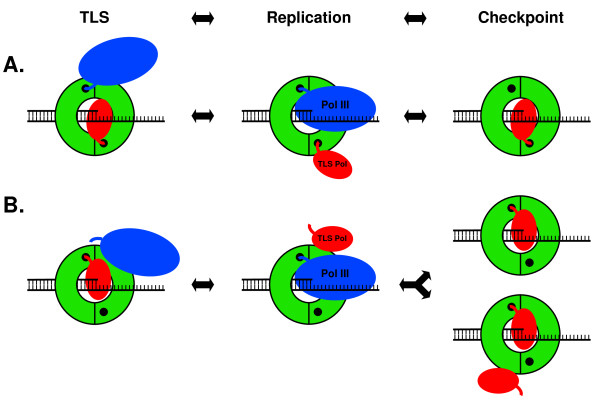Figure 1.
Current models for Pol switching. (A) The 'toolbelt' model posits that both a replicative and a TLS Pol associate with a single clamp, with each Pol binding to a separate cleft. In this model, the clamp acts to regulate sequential access of the two Pols to the DNA [9,10]. Displacement of Pol III from the clamp by Pol II, Pol IV, or Pol V is suggested to arrest replication in response to replication blocking DNA damage via a primitive DNA damage checkpoint control [18,20,38]. (B) In an alternative model, surfaces in addition to the cleft are postulated to play an important role in controlling access of the TLS Pol to the DNA (Residues E93 and L98 of the clamp control access of Pol IV [13,14], and possibly Pol V [16], for TLS), such that a single cleft in the clamp is sufficient to coordinate the switch (reviewed in [5]). TLS Pols may subsequently displace Pol III from the clamp to enable the checkpoint. Alternatively, binding of two or more TLS Pols may be required to displace Pol III and enable the checkpoint. See text for further details regarding these and other models. The green ring represents the β clamp, the small black circle in each clamp protomer represents the cleft, DNA is depicted in stick form, the blue oval represents Pol III, the red oval represents a TLS Pol, and the blue and red curved lines protruding from the respective Pols represents their CBMs, which must contact the clamp cleft to enable access of each respective Pol to the DNA.

